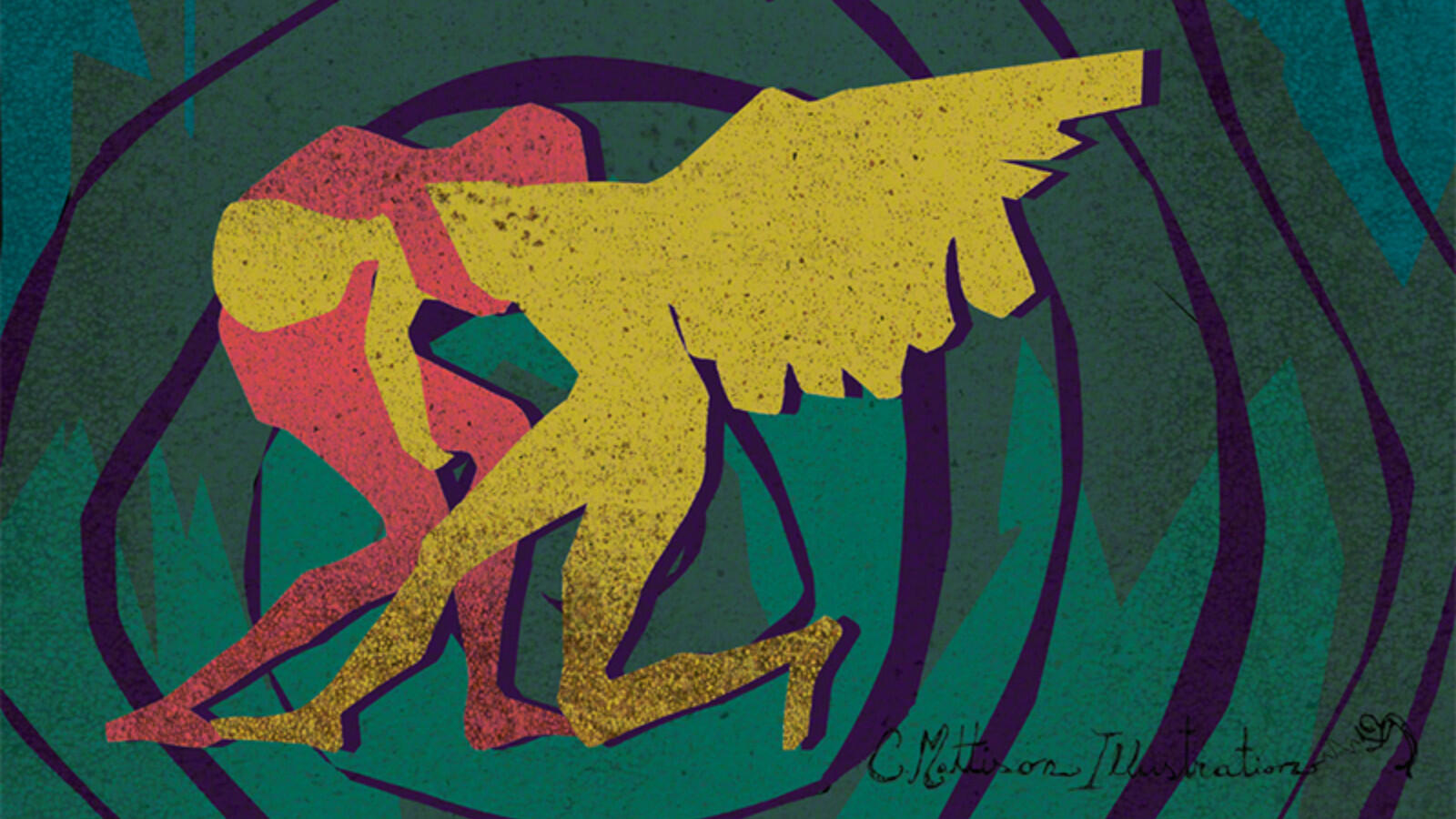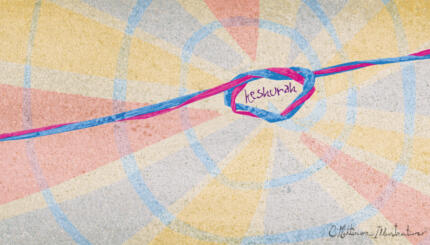In Parashat Vayishlach, Jacob embraces his newly won freedom, confronts and overcomes threats to his life, and earns a divinely bestowed name. Jacob’s steps along this journey are marked by encounters with God and other divine beings: “angels of God” at the end of the previous Torah portion; the mysterious figure with whom he wrestles in this one; and with God. In fact, the Torah portion begins with Jacob sending messengers to his brother Esau, but the Hebrew word for messenger is also the word for angel, and some rabbinic commentaries understand that these messengers were divine beings as well. Jacob even tells Esau that seeing his face is “like seeing the face of God.” In short, this portion is unparalleled in the sheer number of meetings between the human and divine realms.
These encounters are momentous, but they are set among a series of fraught incidents: Jacob’s break from his mother’s brother Laban in the previous portion; his difficult reconciliation with Esau; and the mass slaughter of an entire village by two of Jacob’s sons after the rape of their sister Dinah. Interspersed among memories of betrayal and threats of violence, the encounters with the divine realm promote peace between humans and affirm God’s care for humanity despite its sometimes gaping flaws.
The alternating themes of human strife and divine blessing define Jacob’s remarkable life. Although he never trusts his blessings as much as his own wits, his encounters with God and the angels are moments of awe and gratitude which he commemorates with the construction of pillars and altars, celebrating and sacralizing these human-divine intersections. They are monuments to blessing. But as noted by Rabbi Abraham Isaac Kook, the first Ashkenazi chief rabbi of pre-state Israel, there is a crucial distinction between pillars and altars: the former are constructed of one large stone (matzevah, from the root meaning “to stand”), the latter of many stones (mizbeach, from the root meaning to slaughter or sacrifice). One stands erect, the other lies horizontal.
Kook sees special significance in the difference between the two. The pillar is a monolith, and it reaches toward the heavens. In this way, it commemorates a single individual’s encounter with the divine. The altar is not a monolith, but a composite: it represents the recognition that in order to build a functioning society under mutual covenantal commitment, the contributions of many are required.
With your help, My Jewish Learning can provide endless opportunities for learning, connection and discovery.
It might also be said that the pillar reaches heavenward like the Tower of Babel, which sought to make an exclusive play for divine connection, while the altar lays flat, providing the surface from which many offerings to God can be sent up. The former emphasizes pride and possession, the latter humility and concession.
These images ask us to examine our own nature, and to ask ourselves: When am I a pillar, and when an altar? When do I stand alone as a sentinel, and when do all my attributes work together to offer up the best of myself?
Jacob’s solitary cleverness may defuse conflict with his brother, but it also leads him to deprive that brother of his birthright. That cleverness may have also been passed to his sons, two of whom, Simon and Levi, convince Dinah’s rapist to have the men of his village circumcised – ostensibly in order for him to marry her, but in fact to slaughter them while they were weak and recovering from the procedure. Because of this unforgivable act of violence, Jacob distances himself from Simeon and Levi on his deathbed. And yet Levi is the ancestor of Miriam, Aaron, and Moses, and of the Levites, who went on to serve in crucial roles in the Temple and the political life of Israel.
We thus understand that each of us is a human sine wave, moving back and forth along the spectrum between individual and communal identity. The sacred task that Parashat Vayishlach teaches us is that we must be mindful of where we are along this spectrum, always striving, in our own lives and the life of our community, to modulate our individual desires and personal pride, and always serving the community without succumbing to its most negative impulses. In this way, we honor the best of Jacob and of the tribes he fathers. We honor the spirit of reconciliation, apparent when the formerly estranged Jacob and Esau bury their father Isaac together. And we live ever seeking to transform ourselves the way that Jacob changes his youngest son’s name from Ben-Oni (“son of my suffering”) to Benjamin (“son of the right hand”), hoping to transform the path of his personal journey.
Read this Torah portion, Genesis 32:4 – 36:43 on Sefaria
You May Also Like:
Sign up for our “Guide to Torah Study” email series and we’ll guide you through everything you need to know, from explanations of the major texts to commentaries to learning methods and more.
Subscribe to A Daily Dose of Talmud: Daf Yomi for Everyone — every day, you’ll receive an email that offers an insight from each page of the current tractate of the Talmud. Join us!



